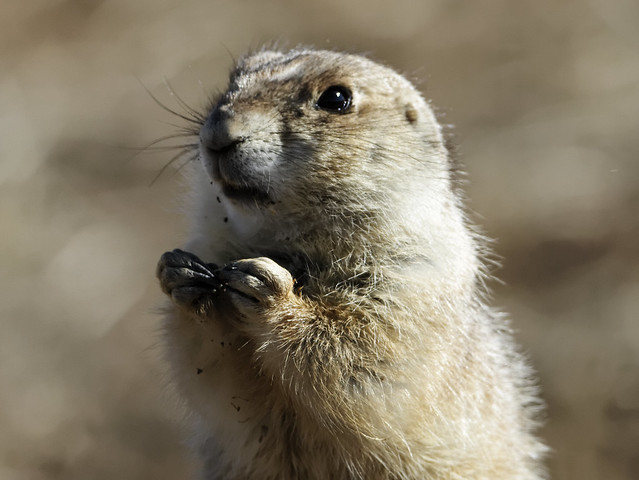You
have probably seen prairie dogs before, either in zoos or images, and
know them to be extremely cute and playful prairie herbivores. However,
you may be wondering what sort of creature the animal shown at the top
of the page is! It is a black-footed ferret, another prairie dweller
that preys exclusively on prairie dogs. The reason why you have most
likely not encountered one is because they are critically endangered
mainly due to scarcity of prey, disease, and lack of genetic diversity.
Ranchers consider prairie dogs pests, since their burrows can break the
legs of stampeding cattle, and because of the mistaken belief that they
harm the grass quality. Articles dating back from 1902 stated that
prairie dogs reduce range productivity, and have only been disproved
recently. As a result of reading these false articles, ranchers began
poisoning prairie dogs. However, poisoning prairie dogs not only kills
the individuals, but transmits the poison to their predators, such as
black-footed ferrets, coyotes, and hawks, thus killing them as well. The
mass extermination of prairie dogs has also directly harmed ferrets,
since ferrets must eat over a hundred prairie dogs a year to survive.
Another
factor that has caused the death of both prairie
dogs and ferrets is disease such as sylvatic plague and canine
distemper. Plague is 100% fatal for black-footed ferrets, and is
transmitted to them by infected fleas biting them or by eating
contaminated prairie dogs. However, a plague vaccine meant for humans
has proved successful for ferrets. Dusting burrows with flea pesticide
is also successful. Canine distemper is not as prevalent as plague, but
it is a major threat to the ferret population. It is spread by animals
in the canine family, such as wolves and coyotes, as the name implies.
Once again, an effective vaccine has been developed and is being
administered to every captive ferret prior to reintroduction. However,
these vaccines may be difficult and time consuming to administer.
Another destructive factor is the genetic bottleneck, or a condition
that results from inbreeding and causes forced reproduction between
individuals that would not, under normal conditions, reproduce. This
causes the exhibition of undesirable traits and a lack of genetic
diversity. A genetic bottleneck is often the result of a population
decrease.
In
order to prevent black-footed ferrets from becoming extinct, they must
be bred in captivity and reintroduced. One method that scientists
propose is the use of preconditioning. During preconditioning, ferrets
are placed in outdoor pens for a minimum of 30 days, giving them
experience hunting prairie dogs while also shielding them from
predators. So far, approximately 3500 ferrets have been released in the
wild. Now, around 500 have survived. In fact, 25 ferrets have just been reintroduced a few days ago in Arizona, on October 1st.
Although this data seems promising, there is still much research to be
done, especially on the issue of the genetic bottleneck. One possible
solution that is currently being investigated is the use of artificial
insemination. Through this process, semen from deceased males can be
used to help female ferrets to reproduce. Thus, a deceased male's genes
could be passed on to future offspring, offering more genetic
diversity.
To read more about black-footed ferrets, visit the website: http://blackfootedferret.org/home
Here is a video of a frolicking ferret kit being reintroduced:
https://www.youtube.com/watch?v=WiUbds5xGp4





No comments:
Post a Comment